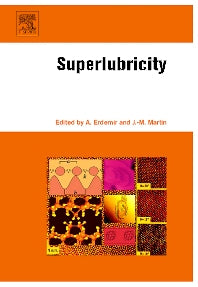Freshly Printed - allow 10 days lead
Couldn't load pickup availability
Superlubricity
Dedicated to this important and rapidly emerging subject, which has a huge positive impact on machine efficiency, durability and the environment
Ali Erdemir (Edited by), Jean-Michel Martin (Edited by)
9780444527721, Elsevier Science
Hardback, published 30 March 2007
524 pages, Illustrated
24 x 16.5 x 3.1 cm, 1.09 kg
Superlubricity is defined as a sliding regime in which friction or resistance to sliding vanishes. It has been shown that energy can be conserved by further reducing/removing friction in moving mechanical systems and this book includes contributions from world-renowned scientists who address some of the most fundamental research issues in overcoming friction. Superlubricity reviews the latest methods and materials in this area of research that are aimed at removing friction in nano-to-micro scale machines and large scale engineering components. Insight is also given into the atomic-scale origins of friction in general and superlubricity while other chapters focus on experimental and practical aspects or impacts of superlubricity that will be very useful for broader industrial community.
Section Headings
Theoretical Aspects of Superlubricity
Experimental Studies on Superlubricity at Nanoscale
Superlubricity of Lamellar Solids
Superlubricity of Carbon-Based Coatings
Superlubricity under Boundary and EHD Lubrication
Subject Areas: Materials science [TGM], Tribology [friction & lubrication TGBF], Mechanical engineering [TGB], Mechanical engineering & materials [TG], Physical chemistry [PNR], Physics [PH]


